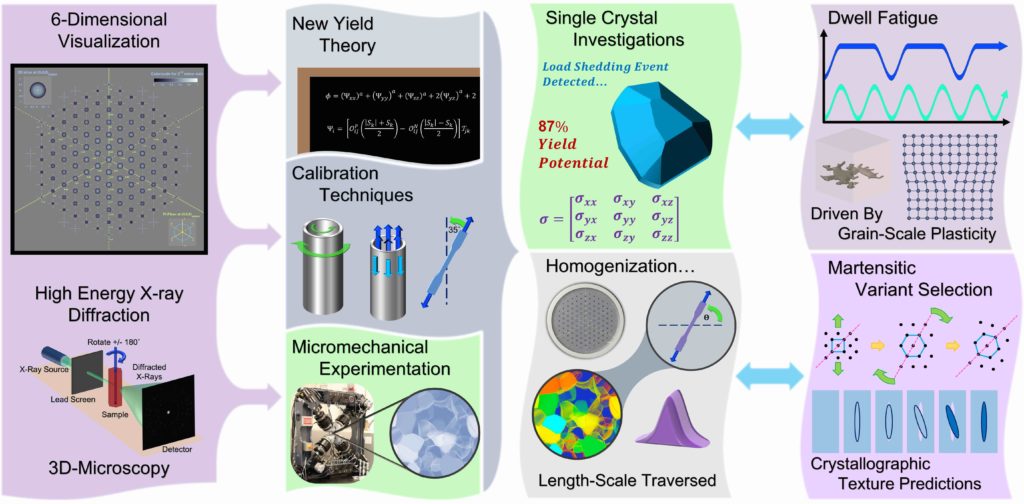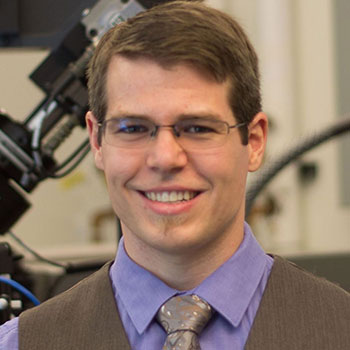Zachary Brunson
PhD, Mechanical Engineering
Colorado School of Mines, anticipated May 2021
MS, Mechanical Engineering
Colorado School of Mines, 2019
BS, Mechanical Engineering
University of Colorado, Boulder, 2013
Minor in Applied Mathematics
Research Focus
Zach’s research encompasses both the theoretical and experimental mechanics of inelastic anisotropic and asymmetric materials. By developing new approaches to visualize the elastic limit that allow for a more complete interrogation of the state of stress, Zach has constructed a new yield theory capable of encompassing triclinic behaviors in both strength and strength-asymmetry. Additionally, new calibration techniques for reducing errors and simplifying calibration procedures are being generated. Major experiments employed by Zach to study material behavior revolve around high energy X-ray diffraction (HEXRD). Using a HEXRD technique called high energy diffraction microscopy (HEDM) to record microstructural information during in situ mechanical testing allows for the reconstruction of the tested region grain by grain. Specifically, information such as grain size, orientation, location, and stress can be recovered for each load step of an experiment.
Partnering these theoretical and experimental techniques provides opportunities for single-crystal investigations, including the detection of grain-to-grain load-shedding events and accurate determinations of the proximity to yield for individual grains. Analysis of such data is being used to investigate the problem of dwell fatigue, a cyclic failure mechanism that is believed to be driven by grain-scale plasticity. Understanding the ins and outs of this failure mechanism is of particular interest to the Air Force Research Laboratory (AFRL) because of its implications for better predicting the lifetime of aircraft components such as turbine compressor blades. Titanium alloys, such as those commonly used in aerospace designs, are particularly susceptible to dwell fatigue.
In addition to directly studying the dwell fatigue mechanism, Zach is also investigating ways to measure material properties using as few experiments as possible. By taking advantage of the large number of grains present in individual specimens and the variety in their orientations, it is theoretically possible to calibrate the single-crystal elastic limit with as few as one or two experiments. Coupling this with homogenization techniques, a procedure is being developed to allow for the bulk-macroscopic yield hypersurface to be calibrated from the single-crystal properties. Finally, by developing a theoretical framework for identifying the energetically preferred variant(s) resulting from a martensitic phase transformation, such as that which takes place during the processing of titanium alloys, strides are being made toward the ability to predict material properties of an as-manufactured component. This would allow for increased accuracy in the predictive capability of the computational models being employed to interrogate the efficacy of engineering designs.

Research funded by: Air Force Research Lab, National Science Foundation, and Army Research Lab
Collaborators: Adam Pilchak, Eric Payton, and Satish Rao, Air Force Research Lab; Rich Becker and JeffLloyd, Army Research Lab; Jun-Sang Park, Peter Kenesei, and Jonathan Almer, Argonne National Laboratory; Garrison Hommer, Branden Kappes and Aaron Stebner, Colorado School of Mines
